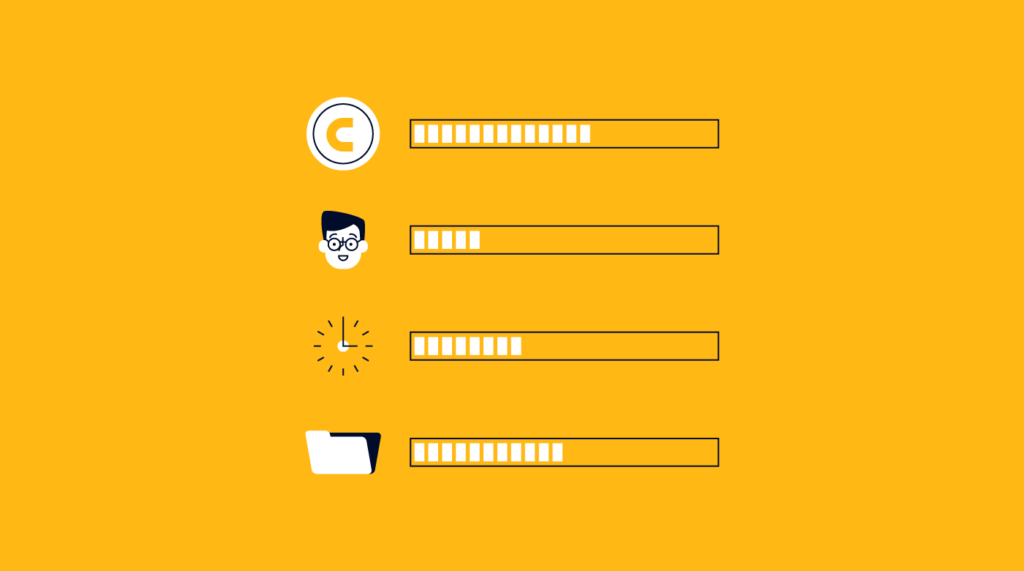Managing resources may be relatively easy when you're a small organization, but as your company grows, you may find resource management software helps you better keep track of resource utilization.
How to choose resource management software is a critical consideration, since selecting the right software makes resource planning a much easier task.
What Is Resource Management Software?
Resource management software is a type of software for managing, tracking, scheduling, and forecasting team members and other resources on your project. It allows you to keep track of resource availability and utilization.
If you're currently using a simple spreadsheet or other home-grown tool, you've probably noticed these systems can be error-prone, especially when you're dealing with large or complex projects.
Dedicated resource management software solves the complexity issue by offering a single, focused interface for resource management.
What to Look for in Resource Management Software
If you're wondering how to choose resource management software, consider the following points:
- SaaS vs Installed Software
- Dedicated Resource Management vs Project Management Tools
- Must-Have Features In Resource Management Software
- Third Party Integrations
- Pricing
SaaS vs Installed Software
Many popular tools for resource management are cloud-based solutions, also known as Software as a Service (SaaS). These tools have some clear benefits:
- Being browser-based, their hardware requirements are minimal
- There's no need to install anything or worry about updates
- You’ll be able to access the data anywhere as long as you have an internet connection
- There's no need to worry about backups
However, there are some downsides to using cloud software:
- Updates are server-side, so if you don't like a new version you can't simply opt-out
- You rely on the SaaS provider for security and may be at increased risk of data breaches
- Cloud solutions are often cheaper to get started with, but because they're subscription-based, you may pay more over the lifetime of the product
Dedicated Resource Management vs Project Management Tools
It's common for project management software to have some features for resource forecasting or resource management.
Project managers with mid-size teams who simply want a high-level overview of resource allocation may find the features of their project management software adequate. Some small businesses, or even larger organizations in certain services or creative industries, can do perfectly well with something like Microsoft Project.
However, if you're working on multiple projects, have a larger team, or your resource requirements become more complex, dedicated resource planning software becomes more useful.
In general, dedicated tools offer better features for forecasting, resource management, tracking availability, and capacity planning across multiple teams.
Must-Have Features In Resource Management Software
Some common features of resource management software that all tools should include are:
- Tracking resource costs
- Viewing team member availability
- Workload management
- Integration with project planning tools
- Cost calculations (actual and planned costs)
- Timesheets
- Resource forecasting
Depending on the size of your organization and the scale of your project, you might prioritize certain features over others.
For example, agencies are likely to need more robust cost tracking features, whereas bigger enterprise organization might prioritize forecasting features that can help them plan 6 to 8 months in advance.
Third-Party Integrations
You may already have some tools that are heavily integrated into your workflow. For example, you may use Toggl as a time tracking software, and Monday.com as your project management and work planning tool.
The best tools will offer third-party integrations, so they can slot easily into your existing workflow. There may be some additional development work required to get everything working together smoothly, but it's important to have information flowing from one app to another for reporting and scheduling purposes.
Pricing
The pricing structures of resource planning software can vary dramatically. As was mentioned earlier, SaaS solutions are usually subscription-based, whereas standalone software may use a one-off license fee, although there could be additional fees for ongoing support and updates.
There are several factors to consider when weighing up the decision of SaaS vs on-premise applications. The subscription model of SaaS tools can make it easier to get started with them, as there's a lower up-front outlay.
It's worth taking a moment to calculate the cost of using the tool over a period of a couple of years to determine whether a one-off purchase might save your organization money.
Even within the SaaS world, subscription models can vary dramatically. Check whether there's a per-user fee or even a per-project fee. Large organizations that run multiple projects concurrently or need to have several people updating resource information on the app may find per-user licenses become expensive very quickly.
10 Best Resource Management Software
Start your search for the best resource management software for your organization here. Keeping in mind the considerations above, make a shortlist from the options below.
Need expert help selecting the right Project Resource Management Software?
If you’re struggling to choose the right software, let us help you. Just share your needs in the form below and you’ll get free access to our dedicated software advisors who match and connect you with the best vendors for your needs.
Resource Management Software Only Works if Your Team Uses It
Before you decide what resource management software or resource scheduling software to adopt, talk to your project leads and the team members who'll be using it.



